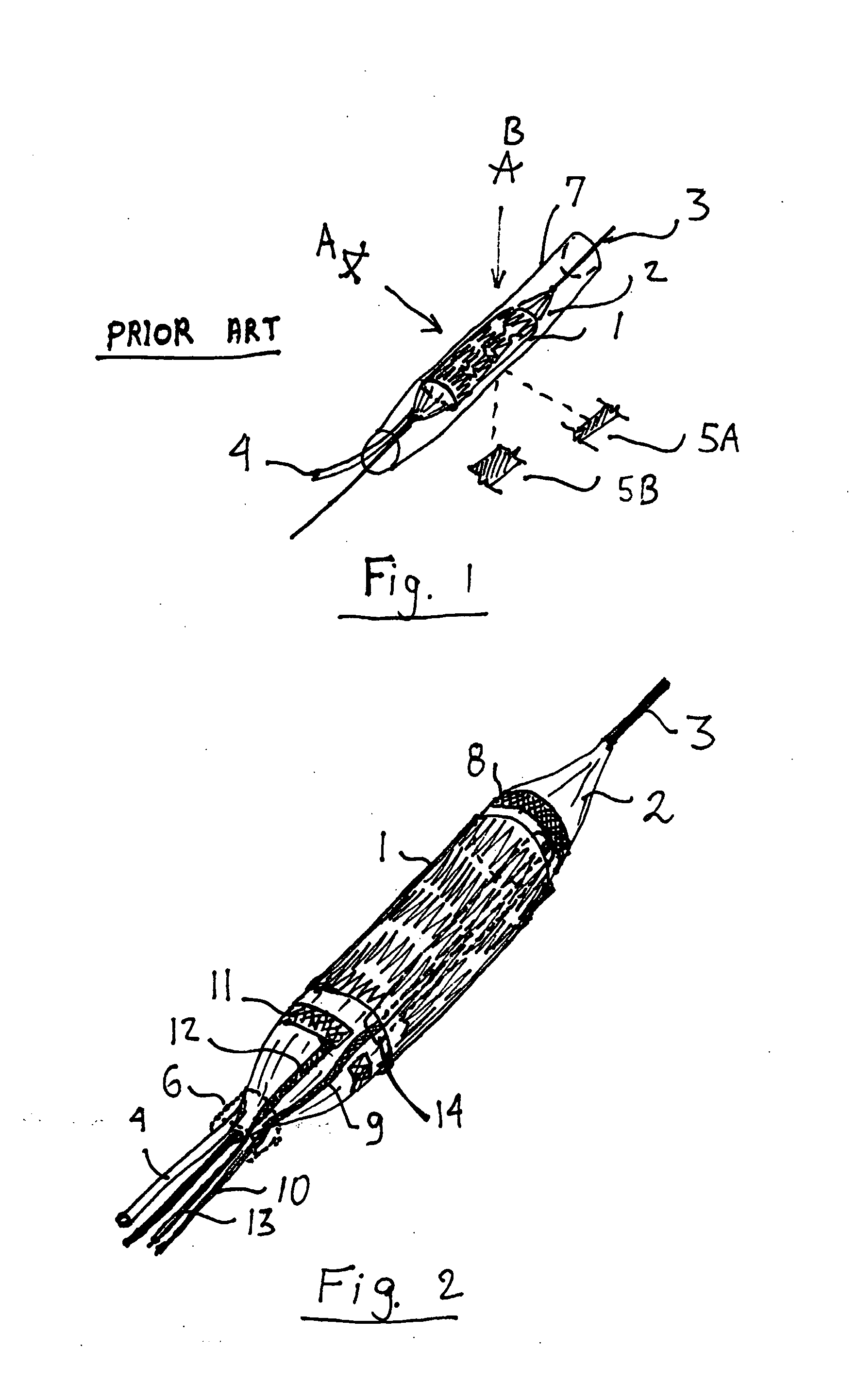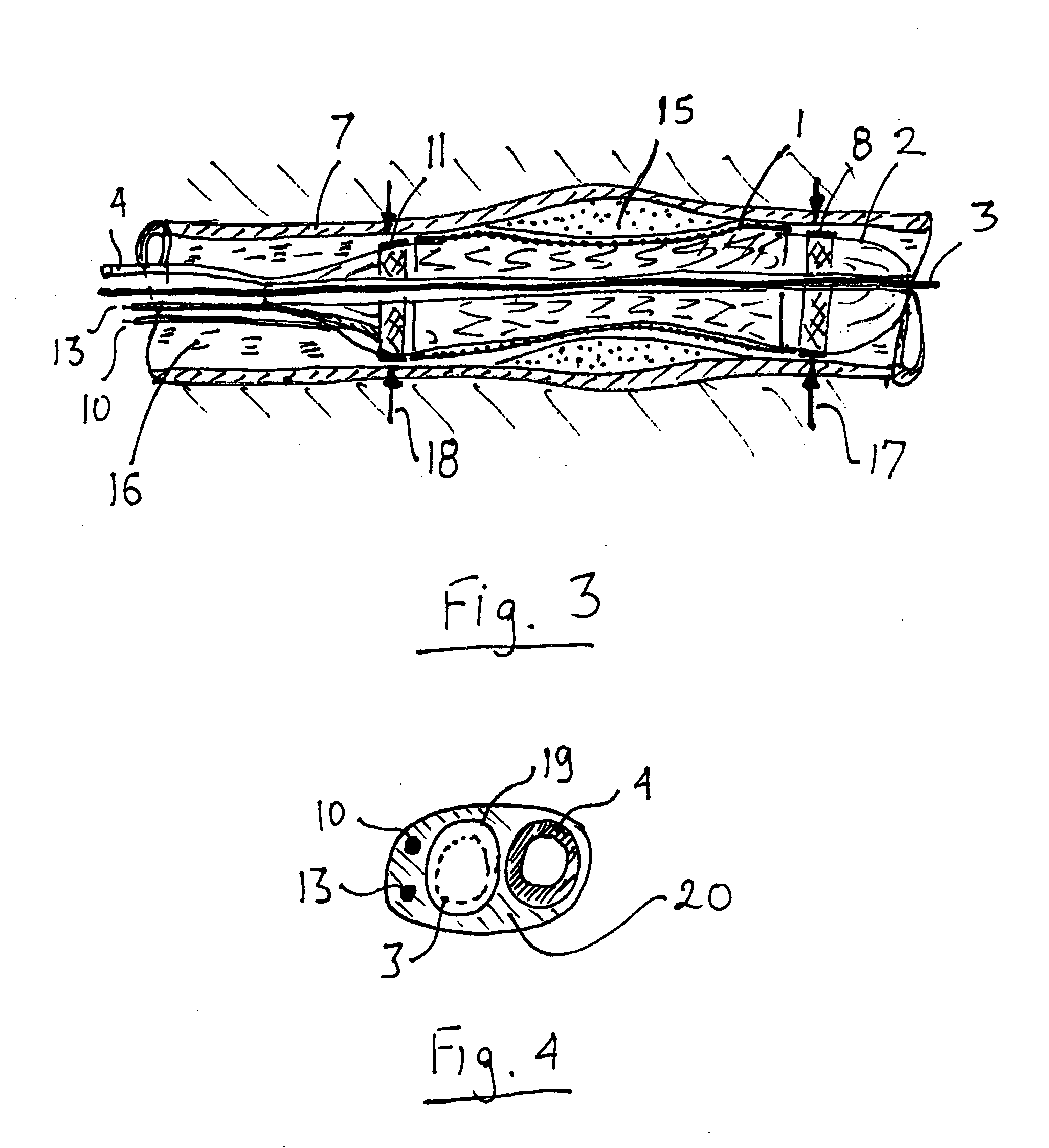Lumen diameter and stent apposition sensing
a technology of stent apposition and lumen diameter, applied in the field of medical science, can solve the problems of increasing stenosis and other well known negative effects, cr stents, and current x-ray tools are not sufficient to judge apposition, and achieve the effect of slowing down and increasing impedan
- Summary
- Abstract
- Description
- Claims
- Application Information
AI Technical Summary
Benefits of technology
Problems solved by technology
Method used
Image
Examples
Embodiment Construction
[0015]Referring now to FIG. 2, a stent 1 is expanded by balloon 2 connected to a pressurizing tube 4 and guided by guide wire 3. As the art of stents and stenting is well known, no further details are given. The balloon has a distal ring electrode 8 and a proximal ring electrode 11 preferably formed by metallizing the pattern directly onto the balloon. The art of metallizing polymers is well known and used extensively is packaging materials. It can be done by vacuum evaporation, sputtering or chemical deposition. The advantage of metallization is that significant conductivity can be achieved without increasing the diameter of the balloon and without affecting its mechanical properties. A typical thickness of a metallized layer is below 1 micron and can be as thin as 0.1 um. Many metals are suitable for the metallized electrodes, such as aluminum, gold, or nickel. The ductility of the coating can be increased by using a serpentine-like pattern but even a solid area will withstand the...
PUM
 Login to View More
Login to View More Abstract
Description
Claims
Application Information
 Login to View More
Login to View More - R&D
- Intellectual Property
- Life Sciences
- Materials
- Tech Scout
- Unparalleled Data Quality
- Higher Quality Content
- 60% Fewer Hallucinations
Browse by: Latest US Patents, China's latest patents, Technical Efficacy Thesaurus, Application Domain, Technology Topic, Popular Technical Reports.
© 2025 PatSnap. All rights reserved.Legal|Privacy policy|Modern Slavery Act Transparency Statement|Sitemap|About US| Contact US: help@patsnap.com



